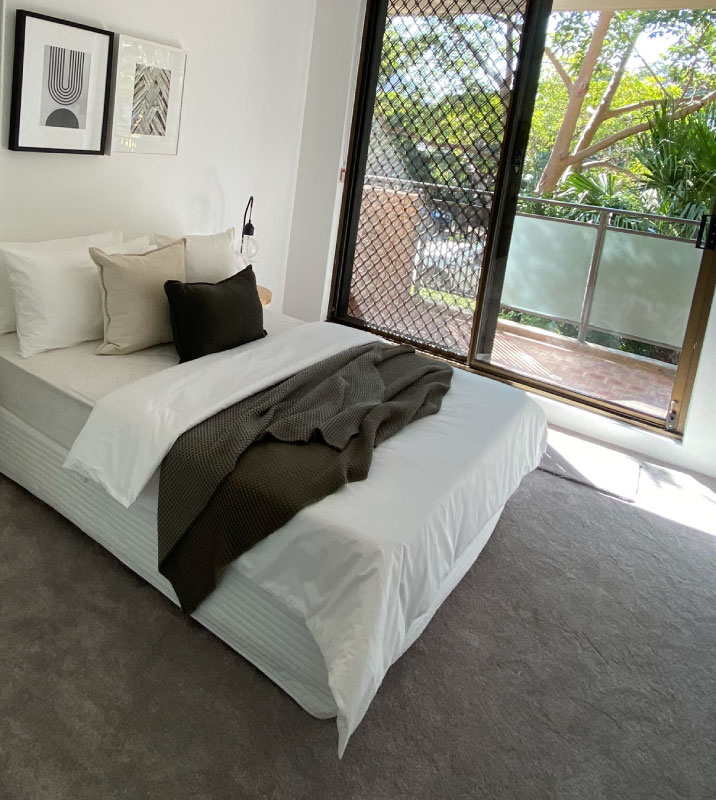
Find a local carpeting expert
- Inspiration /
- Indoor projects /
- Walls & flooring /
- How to lay carpet
How to lay carpet
A step by step guide to creating a warmer, softer living space
Add another level of comfort to your home
Carpet can add a soft touch to any room and serve as the base for the rest of the room design. The right carpet can instantly transform a space. Aside from purchasing the carpet, hiring an installer is a major expense. If you are thinking about skipping this expense and doing it yourself, make sure you actually understand how to lay carpet. Failing to do so may end up ruining your new carpet or having to live with noticeable mistakes. If you want to do it yourself, here are some basic steps and considerations.
Choosing the right carpet for your space
Carpeting is a big investment, and you will want to take this decision into careful consideration. This decision is about more than colour and pile. Here are some things you might want to think about.
- Lifestyle –This is the most important factor in the carpet purchasing decision. You might not want that carpet with the long pile if you have children and pets. Also, consider how well the pattern will hide stains.
- Plush piles vs loop piles – There are two kinds of piles; plush piles and loop piles. Loop piles are usually low and are typically what you find in office carpeting. Plush piles have cut ends and have a soft, luxurious feel on your feet. Short, loop pile carpets are often easier to clean than plush pile carpets. They are an excellent choice for high-traffic areas.
- Colours – When it comes to colour, you might be tempted to go with something trendy, but trends come and go. Buying carpet is a longer-term decision, so you want to make sure that you will be happy with it in the future. Neutrals are a always a good choice.
- Fibre types – If you want natural fibers, you will probably have to choose a rug to go on top of the carpet as an accent. Most modern carpets are made from synthetic fibers, but you can find some carpets that contain a percentage of natural fibers. The most common types of carpet fibers are acrylic, nylon, olefin, and viscose fibers. Viscose is made from natural plant fibers. All of these choices have advantages and disadvantages in terms of wear resistance, resilience, and resistance to fading. Each of these choices has an effect on the cost of the carpet per square metre.

Materials and Tools
The first thing that you need to do is to calculate the amount of carpet needed per square metre. You will want to purchase a little extra to account for any odd areas or mishaps. Once you have purchased the carpet, here are a few other carpet laying tools that you will need to do the job.
- Tackless strip
- Tape
- Tack strip cutter
- Hand stapler
- Wall trimmer
- Top cutter
- Hammer
- Measuring tape
- Knee kicker
- Carpet knife
- Stair tool
- Razor knife
- Power stretcher
- Gloves
How to Lay Carpet
As you can see, there is a lot of specialty equipment needed for laying carpet. There is also a difference between carpet installation and how to lay carpet tiles. Tiles might require special adhesive and a trowel. Once you have the tools assembled, you are ready to begin.
- Prepare subfloor. The first thing you will need to do is to remove the old carpet and clean the subfloor surface. It must be smooth and clean. Remove any joint compound, paint, or rough areas. You will also want to give it a good sweep and vacuum.
- Install tack strips. Now, you can cut the tack strips to the proper length and nail them about 1.27 cm from the wall. Make sure to wear gloves as they are sharp, and do not install them across doorway thresholds. The tacks can poke through and cut your feet.
- Install padding/underlay. Roll out the carpet pad and staple it near the tack strips. Make sure to place the edges close together so that the surface is smooth. Staple the pad seams to hold them down. Use a carpet knife to trim the pad.
- Measure and cut carpet. Roll the carpet out and notch the corners for trimming. This can be done on a garage floor or outdoor driveway, this is easier with two people. Trim the carpet to size. Now, bring it inside and lay it in the room.
- Lay and secure. Lay the carpet down and glue the seams. Trim around any obstacles. Attach the first edge of the carpet to the tack strip. Place the flat end of the knee kicker against the carpet and forcefully strike the padded end to stretch the carpet and cause it to grab the tack strips securely. Now you can trim any excess from the edges.
- Stretch the carpet. Use the power stretcher to attach the carpet to the strips on the other side of the room and the corners. Use a binder bar to secure any areas where the carpet is not against a wall, such as a doorway threshold. Make sure the carpet is well-stretched and does not have any wrinkles or puckers.
Contact a carpet expert
How to Hire a Carpet Installer
As you can see, laying carpet requires special equipment and knowledge. It is also physically strenuous work, and you will have to be on your hands and knees quite a bit. Also, if you do not do all of the steps correctly, the carpet can come loose or have wrinkles that represent a tripping hazard and look unsightly. These are many of the reasons why hiring a professional is a good idea in the first place.
Carpet laying is considered a trade but is no longer licenced under the Home Build Act. Although you do not have to have a licence, you want someone who is experienced and has undergone an apprenticeship or training program. If the carpet is not installed properly, you may have to purchase a new piece of carpet and start over. When hiring a carpet installer, here are a few things to consider.
- Ask them how long they have been installing carpet
- Ask for references or to see pictures of their finished jobs
- Ask if they offer any type of guarantee or warranty on their work
How much will your job cost?
The Oneflare Cost Guide Centre is your one-stop shop to help you set your budget; from smaller tasks to larger projects.



